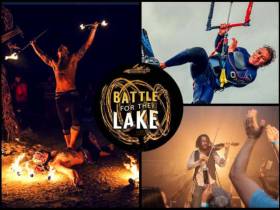Displaying items by tag: Battle for the Lake
Kitesurfers Clash On Achill Island In ‘Battle For The Lake’ This Weekend
#Kitesurfing - Independent.ie has the lowdown on this weekend’s Battle for the Lake kitesurfing extravaganza on Achill Island.
Keel Lough is the venue for the finale of the 2018 IKSA tour that will see many of the same competitors that wowed the crowds during the Battle for the Bay on Dollymount Strand this past summer.
Also bringing his skills to this eighth Battle for the Lake is Kevin Langeree, Red Bull’s King of the Air, who will be giving demonstrations on the lough and even DJing for fans after dark.
Indeed its the festival atmosphere around the competition that’s as much of a draw to Mayo from today (Friday 28 September), with a packed music and comedy lineup — even fire dancers to light up the nights.
Independent.ie has more on the story HERE.
Get Up To Speed As Ireland's Surfing Season Begins
#Surfing - Summer might already be a distant memory, but Ireland's surfing season is only just getting under way.
And beyond the bigger wave hotspots like Sligo, which is set to host record-breaker Garrett McNamara at the second Surf Summit this November, there's a wealth of activity happening all around the Irish coast.
Entertainment.ie brings us a round-up of some of the best places for surfing action for all ability levels, including perhaps lesser-known haunts like the Sunny South East.
But the biggest attraction this month is surely the Battle for the Lake kitesurfing festival on Achill Island next weekend (25-27 September), with its entertaining mix of live music from up-and-coming homegrown acts and dazzling displays by Ireland's top kitesurfers.






























































